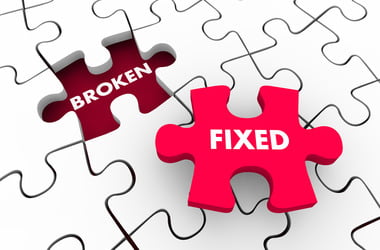Facing the Windows installation error 0x80300024 can disrupt your setup process, but resolving it is simpler than it seems.
This guide offers concise solutions to this common issue, from managing hard drive connections to adjusting BIOS settings. Whether you’re dealing with disk space limitations or hardware conflicts, we’ll provide clear steps to get your Windows installation back on track efficiently. Perfect for both new and experienced users, this article aims to streamline your Windows setup by overcoming the 0x80300024 error.
How to Fix Windows Installation Error 0x80300024?
Solution 1: Disconnect Unnecessary Hard Drives
If you’re installing Windows with multiple hard drives connected, error 0x80300024 may occur due to conflicts between drives. To resolve this, disconnect all hard drives except the one intended for the OS installation. Once Windows is installed, you can reconnect the other drives.
Solution 2: Check if You’re Using the Right USB Port
Ensure the USB flash drive used for Windows installation is connected to a compatible USB port. If error 0x80300024 persists, try using a different USB port, preferably one directly on the motherboard for desktops.
Solution 3: Setting the Hard Drive as the Primary Boot Disc
Error 0x80300024 may occur if the target installation drive isn’t the primary boot device. Access your computer’s BIOS setup at startup and adjust the boot order to prioritize the hard drive designated for Windows installation:
- Begin by restarting your PC.
- Immediately after powering on, press the key to enter BIOS. Common keys include Del, F2, F10, or F12. The exact key varies depending on the manufacturer of your motherboard or computer. If you’re unsure, consult your computer’s manual or look for a prompt on the screen during the boot process that indicates the correct key.
- Once in the BIOS setup, use the arrow keys to navigate to the Boot tab or section. BIOS interfaces differ among manufacturers, but you’re looking for a section or menu labeled something like “Boot Order,” “Boot Priority,” or “Boot Sequence.”
- In the Boot menu, you’ll see a list of available boot devices. This list can include your hard drive, USB drives, CD/DVD drive, and sometimes network boot options. Use the keys indicated in the BIOS (often + or –, or F5/F6) to move your target hard drive (where you want to install Windows) to the top of the list, making it the primary boot device.
- After setting the hard drive as the primary boot device, look for an option to “Save and Exit” BIOS. This is often done by pressing the F10 key, but again, look for on-screen prompts indicating the correct key to save your changes. Confirm any prompts to save the changes.
- With your changes saved, your computer will restart. Make sure your Windows installation media (USB drive or DVD) is inserted. Your PC should now boot from the installation media, proceeding with the Windows installation process.
- Follow the on-screen instructions to proceed with installing Windows on the hard drive you designated as the primary boot device.
Solution 4: Freeing Up Space
Error 0x80300024 can also result from insufficient space on the destination drive. Before installation, format the drive to free up space:
- Ensure you have the Windows installation media ready, whether it’s a USB flash drive or a DVD. Insert it into your computer.
- Restart your computer. Press the key to enter the Boot menu when the initial screen appears (often F12, F9, F11, or Esc, depending on the manufacturer). Select the USB or DVD as the boot device.
- Once the computer boots from the installation media, you’ll see the Windows Setup screen. Select your language, time and currency format, and keyboard or input method, then click “Next.”
- Click on “Install now” to proceed. When prompted, enter your product key or choose “I don’t have a product key” if you’ll activate Windows later. On the next screen, select the edition of Windows you’re installing (if applicable) and agree to the license terms.
- Next, select “Install Windows only (advanced).” This option allows you to perform a clean installation and manage partitions.
- On the screen where you’re asked where to install Windows, you’ll see a list of your hard drives and their partitions. To free up space:
- Select the partition on your destination drive where you want to install Windows.
- Click “Drive Options (advanced).”
- To delete a partition, select it and click “Delete.” Confirm the deletion. This action will erase all data on the partition, making space available for Windows installation.
- To format a partition, select it and click “Format.” This will remove all data and prepare it for a clean installation of Windows. Confirm the format when prompted.
- If you’ve deleted existing partitions, you can create a new one by selecting Unallocated space on your drive and clicking “New.” Specify the size, or just use the maximum size available to use the entire drive, then click “Apply.”
- After formatting or creating a partition, make sure it’s selected, then click “Next” to begin installing Windows on the clean, formatted drive.
- The installation process will start copying files to the hard drive and going through the setup process. Your computer may restart several times during this process. Follow any on-screen instructions to customize your Windows installation settings.
Solution 5: Replacing Your Hard Drive
If error 0x80300024 persists after attempting the above solutions, your hard drive may be faulty. Consider replacing it to resolve installation issues.
Conclusion
Fixing Windows error 0x80300024 is straightforward with our guide, from adjusting hardware configurations to ensuring your PC’s boot settings are correctly aligned. Remember, a clean slate for your drive might just be the key. Should the error persist, replacing your hard drive could be the ultimate solution.



